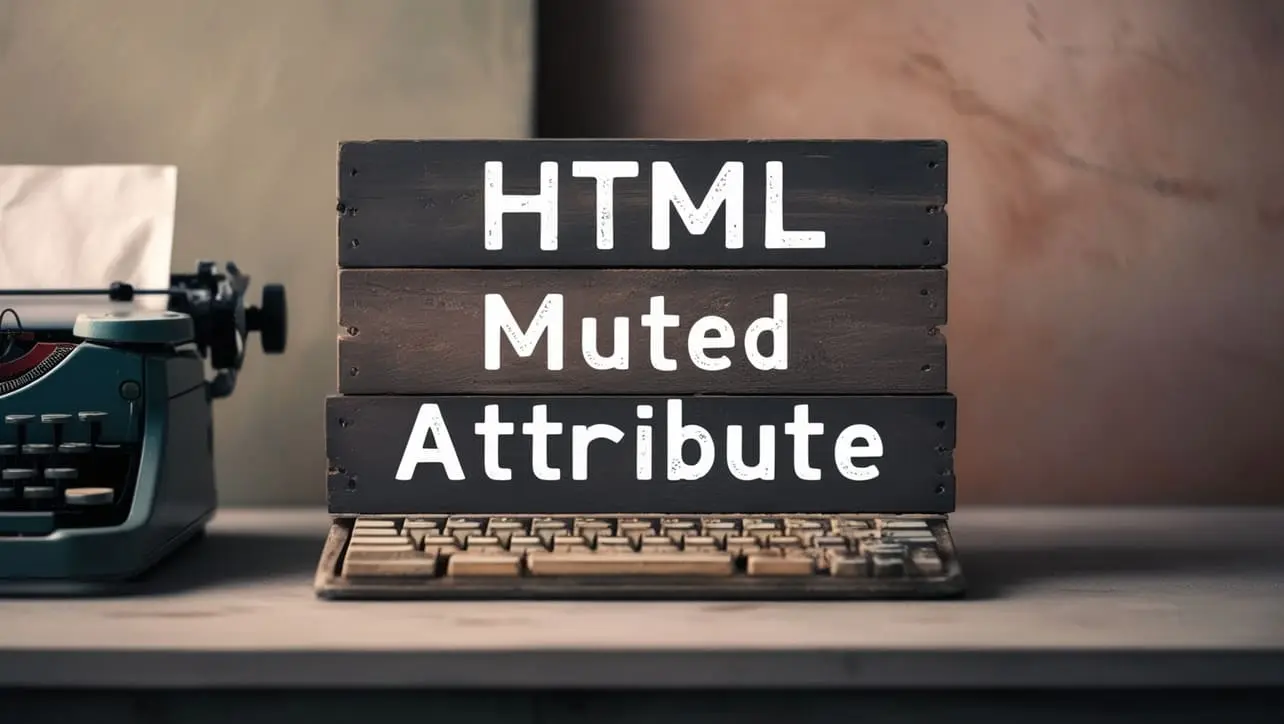
HTML Topics
- HTML Intro
- HTML Basic
- HTML Editors
- HTML CSS
- HTML Tags
- HTML Deprecated Tags
- HTML Events
- HTML Event Attributes
- HTML Global Attributes
- HTML Attributes
- abbr
- accept
- accept-charset
- accesskey
- action
- align
- alt
- archive
- as
- async
- autocapitalize
- autocomplete
- autofocus
- autoplay
- axis
- bgcolor
- border
- cellpadding
- cellspacing
- char
- charoff
- charset
- checked
- cite
- class
- classid
- codebase
- codetype
- color
- cols
- colspan
- compact
- content
- contenteditable
- controls
- coords
- crossorigin
- data
- data-*
- datetime
- declare
- default
- defer
- dir
- dirname
- disabled
- download
- draggable
- enctype
- enterkeyhint
- for
- form
- formaction
- formenctype
- formmethod
- formnovalidate
- formtarget
- frame
- frameborder
- frameset
- headers
- height
- hidden
- high
- href
- hreflang
- hspace
- http-equiv
- id
- inert
- inputmode
- ismap
- kind
- label
- lang
- list
- loop
- low
- max
- maxlength
- media
- method
- min
- multiple
- muted
- name
- novalidate
- onabort
- onafterprint
- onbeforeprint
- onbeforeunload
- onblur
- oncanplay
- oncanplaythrough
- onchange
- onclick
- oncontextmenu
- oncopy
- oncuechange
- oncut
- ondblclick
- ondrag
- ondragend
- ondragenter
- ondragleave
- ondragover
- ondragstart
- ondrop
- ondurationchange
- onemptied
- onended
- onerror
- onfocus
- onhashchange
- oninput
- oninvalid
- onkeydown
- onkeypress
- onkeyup
- onload
- onloadeddata
- onloadedmetadata
- onloadstart
- onmousedown
- onmousemove
- onmouseout
- onmouseover
- onmouseup
- onmousewheel
- onoffline
- ononline
- onpagehide
- onpageshow
- onpaste
- onpause
- onplay
- onplaying
- onpopstate
- onprogress
- onratechange
- onreset
- onresize
- onscroll
- onsearch
- onseeked
- onseeking
- onselect
- onstalled
- onstorage
- onsubmit
- onsuspend
- ontimeupdate
- ontoggle
- onunload
- onvolumechange
- onwaiting
- onwheel
- open
- optimum
- pattern
- placeholder
- popover
- popovertarget
- popovertargetaction
- poster
- preload
- readonly
- rel
- required
- reversed
- rows
- rowspan
- sandbox
- scope
- selected
- shape
- size
- sizes
- span
- spellcheck
- src
- srcdoc
- srclang
- srcset
- start
- step
- style
- tabindex
- target
- title
- translate
- type
- usemap
- value
- width
- wrap
- HTML Comments
- HTML Entity
- HTML Head
- HTML Form
- HTML IndexedDB
- HTML Drag & Drop
- HTML Geolocation
- HTML Canvas
- HTML Status Code
- HTML Language Code
- HTML Country Code
- HTML Charset
- MIME Types
HTML muted Attribute

Photo Credit to CodeToFun
🙋 Introduction
The muted attribute is a feature in HTML used primarily with <video> and <audio> elements to specify whether the media should be muted by default when loaded in a web page.
This attribute provides developers with control over the initial audio output of media elements, allowing for a more customized user experience.
🎯 Purpose of muted
The main purpose of the muted attribute is to silence audio content by default. This can be particularly useful when embedding videos or audio files where the audio is not essential or distracting to the user. By setting the muted attribute, you can ensure that the media starts playing without sound until explicitly enabled by the user.
💎 Values
The muted attribute accepts two values:
- muted: This value indicates that the media should be muted by default when loaded on the page.
- unmuted: This value explicitly indicates that the media should not be muted by default. It's essentially the absence of the
mutedattribute.
📄 Example
Let's consider an example of how to use the muted attribute with a <video> element:
<video controls muted>
<source src="movie.mp4" type="video/mp4">
Your browser does not support the video tag.
</video>🧠 How it Works
In this example, the muted attribute is added to the <video> element, indicating that the video should be muted by default when loaded on the page. The controls attribute provides playback controls to the user.
🔄 Dynamic Values with JavaScript
You can also dynamically set the muted attribute using JavaScript. This can be useful when you want to control the muted state based on user interactions or other conditions. Here's a simple example:
<script>
// Dynamically mute or unmute a video element
const video = document.getElementById("myVideo");
// Mute the video
video.muted = true;
// Unmute the video
video.muted = false;
</script>🧠 How it Works
In this script, the muted property of a <video> element with the id myVideo is set to true or false, thereby muting or unmuting the video dynamically.
🏆 Best Practices
- Use the
mutedattribute thoughtfully, considering the context and purpose of the media content. Silence may enhance user experience in certain situations, but it's important not to detract from the intended content. - Provide alternative means for users to enable audio if needed, such as explicit controls or instructions.
- Test your media elements with and without the
mutedattribute to ensure they behave as expected across different browsers and devices.
🎉 Conclusion
The muted attribute in HTML offers developers a simple yet effective way to control the initial audio output of media elements on web pages.
By leveraging this attribute appropriately, you can create more engaging and user-friendly multimedia experiences.
👨💻 Join our Community:
Author

For over eight years, I worked as a full-stack web developer. Now, I have chosen my profession as a full-time blogger at codetofun.com.
Buy me a coffee to make codetofun.com free for everyone.
Buy me a Coffee












If you have any doubts regarding this article (HTML muted Attribute), please comment here. I will help you immediately.